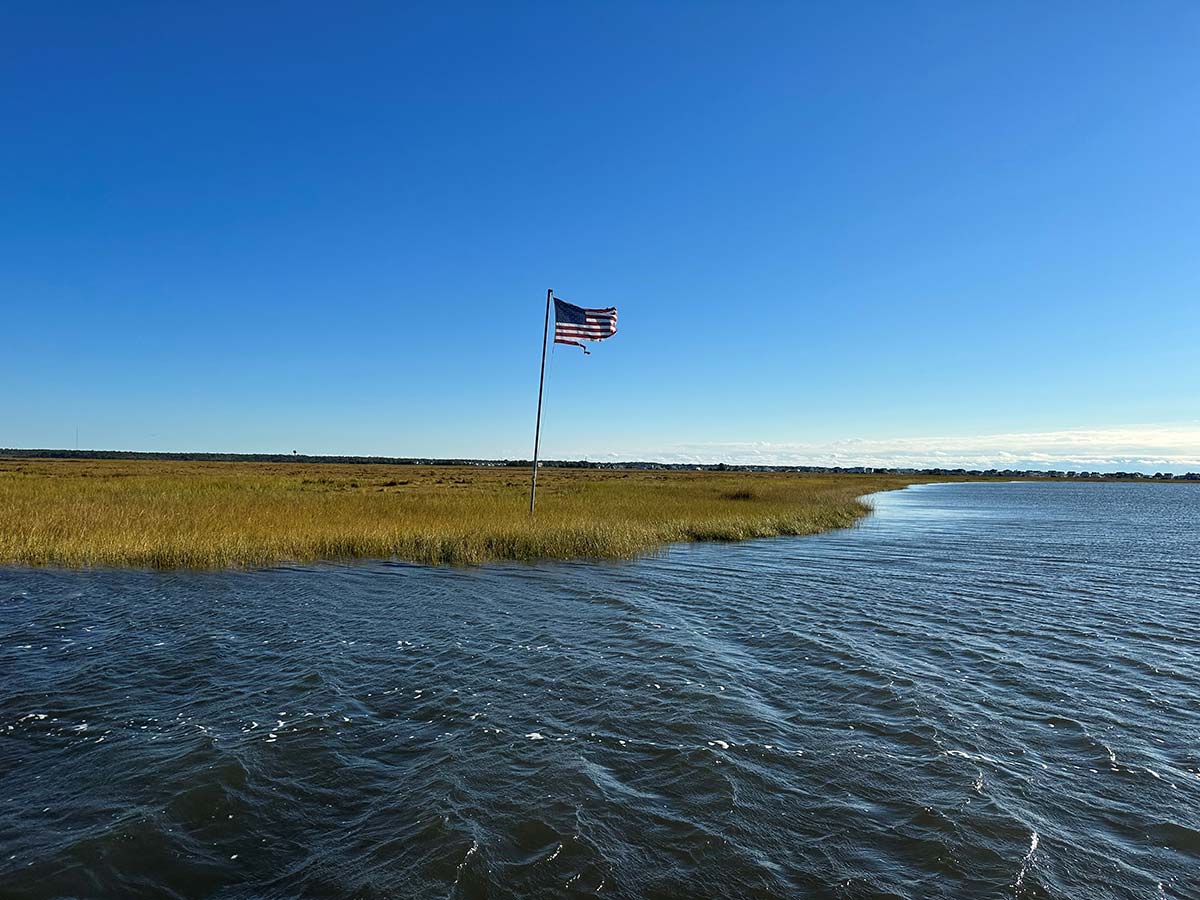
Wind can certainly make fishing tougher, but don’t let it stop you.
To the chagrin of anglers everywhere, gusty winds create challenging fishing situations. But wind is a part of nature and the pursuit of fishing, so there’s no avoiding it. It leaves two choices: learn to function and fish with a steady, stiff breeze, or option two: Stay home and mow the lawn. Those with wide-open schedules often skip the breezy days; however, the working world has to make their days off count. Hungry anglers that want to get on the water must learn how to mitigate Mother Nature. And they can use what the landscape, natural or manmade, offers in the form of windbreaks.
Fluke and striped bass anglers that ply skinny and inlet waters have several options. The first and most common form of a windbreak is the actual land itself. Even with no profile that rises high in the air, anglers can hide behind a sod bank, beach, or berm. For example, fluke anglers on the drift will want to start their drag close to the bank that the wind is blowing from. Banks that fall or slope instantly are the best because those waters are favored by summer flounder. The drifting fluke vessel will get anywhere from 20 to 100 yards of calm water with less texture and a truer drift. The harder the gusts, the shorter the drift will last before having to start over and go back to the contour. This is due to a greater wind fetch. In oceanography, fetch is defined as the length of water in which a given wind is blown without obstruction. Once boats drift far away from the bank, the wind and light chop will increase, which will increase drift velocity and affect fishing conditions.
Sand dunes and cliffs that line beaches and bays are outstanding natural wind buffers. In addition, there are more significant manmade windbreaks, especially in the developed land of the Northeast. Bulkheads, houses, and buildings reach into the sky. The more unbroken they are, the better the windbreak. They allow fluke fishermen to drift with the reduced wind. Those adjacent to deep water will catch more fish. Where I reside and fish, the inlet has extremely large buildings. When the gusts really crank up coming from their direction, all the boats start their drift near the structures, which allows for a respectable drift for a couple of hundred yards before getting slapped in the face by the breeze.
Another hidden gem my inlet held for several years was the storage of dredge equipment. There were the tugs, a barge, and pipes that irritated us all, but they did present a unique opportunity. On blustery days, local boaters learned to navigate within the equipment where the water was bathtub calm and the current very slow. We drifted on the downwind side as well. Hence an eyesore, and something that was essentially in the way, became a value for a few months of the fluke season. Summer flounder were routinely caught from these waters.
Windbreaks aren’t just in the backwaters, and for fluke fishermen, striped bass and tog anglers use them too. For example, the actual oceanfront beach is a windbreak. I live in New Jersey, where west and northwest winds come directly off the land. Therefore, if the wind is steadily blowing over 20 miles per hour with higher gusts, I and many others will try to catch our quarry closer to the hill. For stripers, this means finding fish inside of 2 miles because, at 2.5 miles, it like a washing machine with building seas. If fish are close to the beach (which is really nice), the waters can be quite calm despite the gusts. In fact, since adult and peanut bunker prefer to swim into the wind, there’s hope for enhanced action near the beach. Surf fishermen like the wind blowing offshore for several reasons. They can cast further with the wind at their back, and the menhaden that bass love come right up to the shore break. Understanding the wind direction in your fishing territory will make you a more effective angler.
Ocean-bound, bottom fishermen can use the land as a wind break also, but structure that holds those species must be close to shore. I can think of many spots where hard rock paves the ocean floor near the beach. Boaters can literally anchor and fish tog, sea bass, and fluke a couple of hundred yards offshore when a raging chop exists a few miles out and beyond. Learning tight-to-the-beach structure will enable outings during heavy offshore blows.
Wind can certainly make fishing tougher, but don’t let it stop you and. Rather, use what’s available to make the most out of your time and effort.



